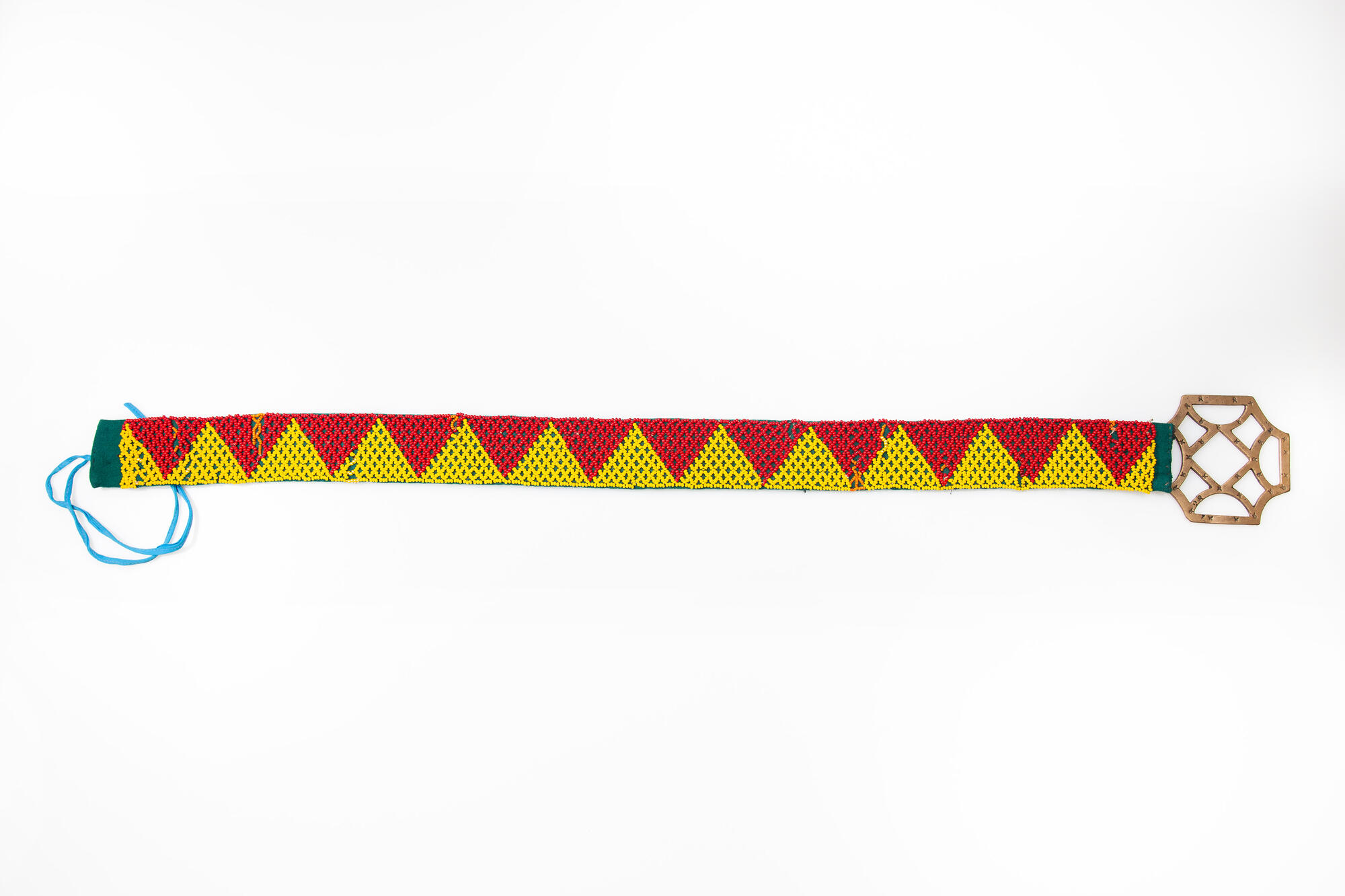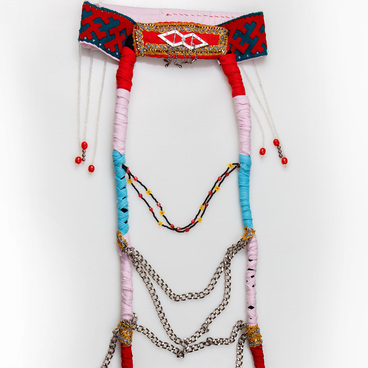The belt is the key element of Nenets clothing at any time of the year. Men and women have worn different types of belts since their outerwear differed in cut: the men’s malitsa was put on over the head, and the women’s yagushka had a front opening. Women wrapped the right front part of the yagushka over the left one and pulled the belt tight. Both men’s and women’s belts were called “nee”, but they looked differently.
Men’s belts were heavy; they were sewn from strong deerskin and had bone buckles. A knife, a whetstone, a gunpowder flask, a pipe with a flint and other items were attached to the belt. Women wore braided belts without pendants; they served only to fix clothes. When children learned to walk, they got their first ribbon belts from their parents, who explained to the kids that the belt was their main assistant and companion, which would always support posture and protect the back, because the spine was just as important as the head. When children were one year old, the belts of boys and girls became different in design.
The women’s belt showed how well off the woman was. It was decorated with colored cloth and embroidered with beads. The belt from the collection of the Purovsky Museum features a “chum” ornament — this is a basic Nenets female pattern. It symbolizes the chum, a Nenets portable tent that women set up and make warm inside. The two main colors — yellow and red — symbolize fire, heat, blood and the birth of life.
Beads are one of the favorite ways to decorate Nenets clothing and household items. Their brightness, brilliance and variety of colors, as well as the tradition of handicraft, have become part of the northern way of life. The bright colors of beaded jewelry enliven northern landscapes, and sacred patterns symbolize folk myths and legends.
According to the Nenets, the belt is located between the top and bottom, connecting the sacred and the material. The Nenets have strict rules for handling the belt: it is forbidden to throw it, step on or step over it. The belt is a telltale sign: if it is worn improperly, the Nenets would not do business with a person like this. The buckle on the women’s belt symbolizes purity, and the belt itself symbolizes life and health. The Nenets believed that if a belt was lost, misfortune would befall the wearer.
Men’s belts were heavy; they were sewn from strong deerskin and had bone buckles. A knife, a whetstone, a gunpowder flask, a pipe with a flint and other items were attached to the belt. Women wore braided belts without pendants; they served only to fix clothes. When children learned to walk, they got their first ribbon belts from their parents, who explained to the kids that the belt was their main assistant and companion, which would always support posture and protect the back, because the spine was just as important as the head. When children were one year old, the belts of boys and girls became different in design.
The women’s belt showed how well off the woman was. It was decorated with colored cloth and embroidered with beads. The belt from the collection of the Purovsky Museum features a “chum” ornament — this is a basic Nenets female pattern. It symbolizes the chum, a Nenets portable tent that women set up and make warm inside. The two main colors — yellow and red — symbolize fire, heat, blood and the birth of life.
Beads are one of the favorite ways to decorate Nenets clothing and household items. Their brightness, brilliance and variety of colors, as well as the tradition of handicraft, have become part of the northern way of life. The bright colors of beaded jewelry enliven northern landscapes, and sacred patterns symbolize folk myths and legends.
According to the Nenets, the belt is located between the top and bottom, connecting the sacred and the material. The Nenets have strict rules for handling the belt: it is forbidden to throw it, step on or step over it. The belt is a telltale sign: if it is worn improperly, the Nenets would not do business with a person like this. The buckle on the women’s belt symbolizes purity, and the belt itself symbolizes life and health. The Nenets believed that if a belt was lost, misfortune would befall the wearer.



